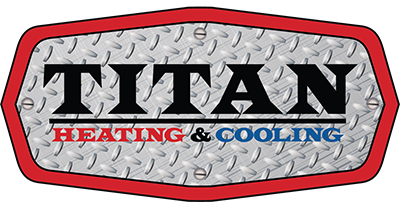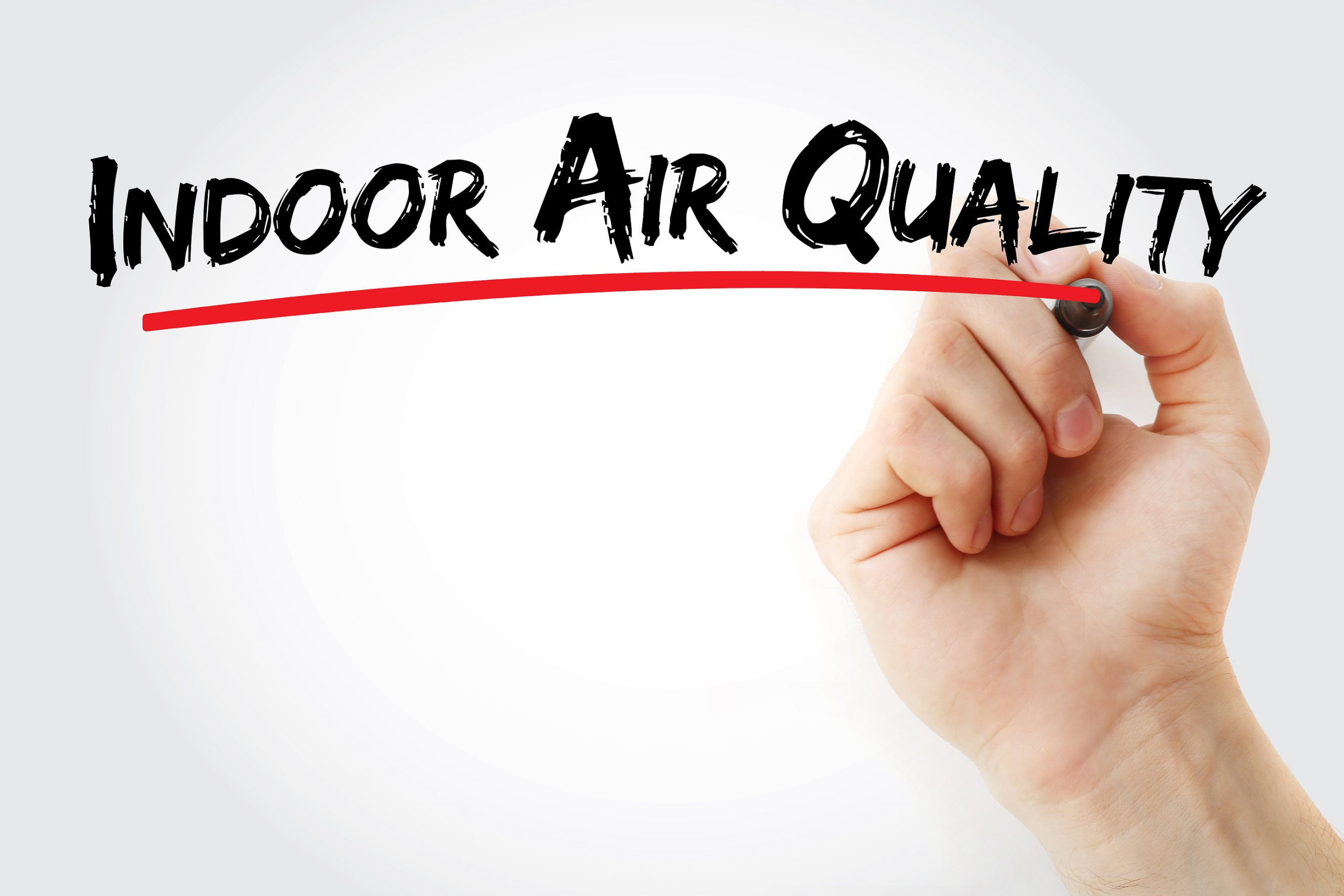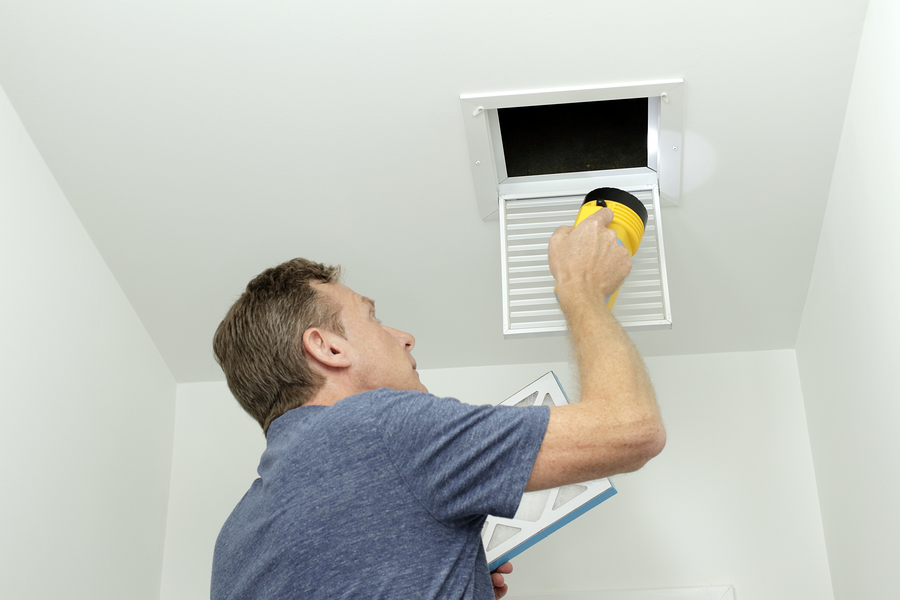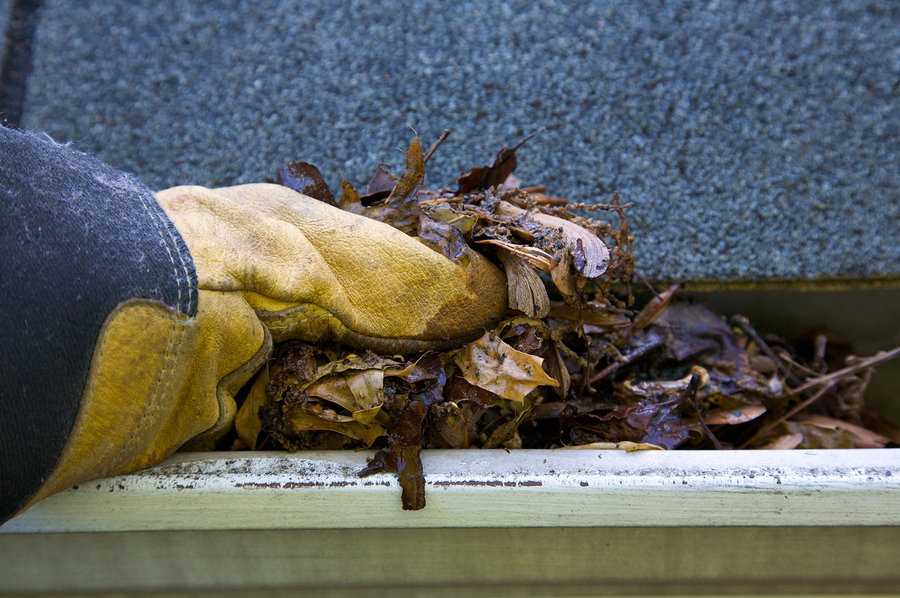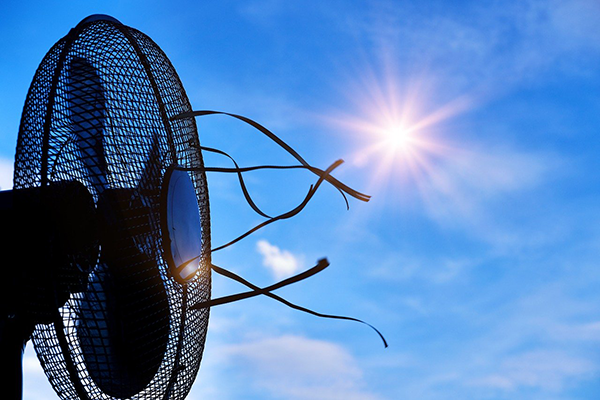Managing the humidity level in your home is an under-discussed facet of maintaining good indoor air quality. When the humidity in your home is either too high or too low, it can degrade the quality of your air, leading to damage to your home and your belongings as well as negative health effects for you and your family. Humidity control through the use of a humidifier or dehumidifier helps balance your home’s humidity levels for better indoor air quality. Ideal Indoor Humidity Levels Humidity is the amount of water vapor in the air. Relative humidity is the percentage of water vapor in the air at a given temperature compared with the maximum amount of water vapor the air can hold at that temperature. When we talk about indoor humidity levels, we are using a measure of relative humidity. Ideally, humidity levels in your home should be between 35 and 60%. This is the sweet spot for comfort level as well as for healthy indoor air quality. Outside of this range, your home will feel less comfortable and you will begin to notice the effects of poor indoor air quality on your health. How Does Humidity Affect Air Quality? Humidity levels affect how warm or cool your home feels. In the winter, when the air dries out due to drier outdoor air and running your heating system, low humidity can make your home feel colder, even when your thermostat is set at an otherwise comfortable temperature. The higher the moisture content in the air, the warmer your home will feel. Additionally, bacteria and viruses that cause respiratory illnesses thrive in environments with significantly high or low humidity levels. High humidity can also increase the prevalence of mold, dust mites, and other allergens in your home. These things can have a significant impact on your home’s air quality and your family’s health and wellbeing. Health Effects of Low and High Humidity Both extremely low and extremely high indoor humidity can negatively affect your health. Low Humidity When your home’s humidity levels are balanced, moisture in the air weighs down particles of bacteria, viruses, and other pollutants, causing them to fall. But when humidity in your home is low, the drier air allows these particles to move more freely throughout your space. The less moisture there is in the air, the more freely the particles can circulate. Low humidity can cause: Dry skin, rashes, and infectionsChapped lipsItchy eyes and noseDry sinuses and throatDry coughNosebleedsWorsened asthma symptomsand more In addition, dry mucous membranes in the sinuses can make it more difficult for your body to fight off the germs that cause colds, flu, and other respiratory illnesses. Improving your indoor air quality by balancing your home’s humidity levels can help control the spread of infectious diseases. High Humidity On the other end of the spectrum, high indoor humidity can also cause negative health issues, such as: Growth of mold and mildewIncreased prevalence of dust mitesSinus stuffinessDifficulty breathingHeadachesEye irritationSkin irritationAggravated asthma symptoms In addition, high humidity can make warm temperatures feel even warmer, leading to heat-related illnesses like heat rash, heat exhaustion, or even heat stroke. Benefits of Home Humidity Control Luckily, the majority of adverse health effects caused by extreme levels of humidity can be minimized through humidity control. When your home’s humidity levels are kept within the ideal range, you will experience: Healthier skinA more comfortable sleeping environmentReduction in dry, scratchy throat, eyes, and sinusesImproved asthma symptomsReduced risk of airborne illness transmissionAnd many more health and wellness benefits Controlling the humidity in your home is as simple as installing a humidifier or dehumidifier, depending on your needs. At Titan, we install Aprilaire whole-house humidifiers and Ultra-Aire whole-house or free-standing dehumidifiers. Installing a whole-house humidifier or dehumidifier...
Read MoreJust like your car, your HVAC system needs routine preventative maintenance to keep it running at its best. HVAC repairs can be costly, but luckily there are a few simple things you can do each month to keep your system in shape and avoid unnecessary repairs. These three tasks are at the top of our list for routine HVAC maintenance. 1 - Change the Air Filter Operating your HVAC unit with a dirty or clogged filter can cause damage to your equipment and reduce your indoor air quality. Your air filter needs to be changed every 30-90 days and checked for dirt and clogs every month. To check it, remove the air filter and look for damage. If there is damage, or if you haven’t changed the filter in a while, swap it out for a new one. If there is no damage and you want to extend the filter’s life for another month, gently wipe off any dirt with a damp cloth. The more people and pets you have in your home, the more often you will need to change your filter. When buying new filters, look for a high MERV rating, which is a measure of energy efficiency. If you have allergies, consider a HEPA filter to improve your air quality even more. 2 - Check Drains and Hoses Take a look at your A/C unit’s drains and hoses each month, looking for obstructions and leaks. Inspect the drain pans and condensate drains, ensuring they are unobstructed and clean. This will keep excess moisture from being trapped in the unit or inside the house. 3 - Clean the Outside Unit Cleaning the outside unit of your HVAC system is just as important as tending to the indoor unit. Each month, check to make sure your outdoor unit is free of leaves, twigs, or other debris, and that trees or shrubs offer at least 2-3 feet of clearance around the unit. Remove the fan cage on top of the unit and vacuum out the interior. Use a gentle spray from your garden hose to clean dust off of the fins, and wipe down the outside of the unit as well. Doing these three things each month, along with routine annual maintenance, will help keep your HVAC system in prime condition, so you can stay cool in the summer and warm in the winter. If you are in need of HVAC maintenance or service, Titan Heating and Cooling has your back — give us a call at 651.714.8931. ...
Read MoreWhen we consider the quality of the air we breathe, we tend to think of outdoor air pollution, but we don’t often think about pollution in the air inside our homes. But in many cases, indoor air can be just as polluted, if not more so, than the air outside. Poor indoor air quality can cause or contribute to an array of health problems - some minor, others much more serious. Let’s take a look at how the air you breathe could be impacting your health. What Causes Poor Indoor Air Quality? Many things can cause the air in your home to become polluted: Dust Mold Mildew Smoke from cigarettes or cooking Fumes from carpet and furniture Bacteria or viruses Pet dander Cleaning products Air fresheners and more can all diminish the quality of the air you breathe. All of your day-to-day activities ultimately contribute in one way or another to the air quality in your home. Additionally, improper ventilation and high humidity can increase the concentration of pollutants in the air, further contributing to the problem. Health Effects Associated With Poor Air Quality The effects of exposure to poor indoor air quality vary depending on many factors, including the type and concentration of pollution in the air, the sensitivity level of each person, and the length of exposure to the pollutant. If you have symptoms at home but they diminish or disappear when you leave, it’s possible you are experiencing the effects of poor air quality. Some of the health effects that polluted indoor air contributes to are: Immediate effects: Irritation of the eyes, nose, throat, or skin Headaches Dizziness Fatigue Shortness of breath or mild asthma Long-Term Effects: Respiratory disease Rapid heartbeat or heart disease Nausea or vomiting Worsening asthma symptoms Lung cancer These long-term effects can happen in cases where you are exposed to particularly harmful pollutants (such as radon or ozone) or to a high concentration of less harmful pollutants for an extended period of time, and you may not notice more severe symptoms for many years. Also, some people are more sensitive to pollutants than others, so all family members may not experience the same symptoms. How to Improve Indoor Air Quality There are a number of ways to improve the quality of the air in your home, ranging from simple things you can try on your own to bigger changes that require help from a professional. Opening up the windows for ventilation, opting for cleaning and personal care products that produce less toxic fumes, running a dehumidifier on humid days, changing your air filter regularly, and having your HVAC system professionally cleaned can significantly improve your indoor air quality. For an even greater improvement in your home’s air quality, consider installing a whole-house ventilation system or adding an air purifier to an existing system. Product Spotlight: BreatheCLEAN Air Purifier Here at Titan we recommend the BreatheCLEAN Total Home Air Purifier for the ultimate in indoor air purification. BreatheCLEAN uses the power of pure ultraviolet light to kill airborne microorganisms such as germs, bacteria and mold. It easily installs into the existing ductwork of your home’s central ventilation system and continually cleans the air as it circulates. No competing model offers more effective purification for your home, and the BreatheCLEAN system costs less than you’d think. If you’re ready to improve the quality of your indoor air with an air purifier, upgraded air filter, new dehumidifier, or professional HVAC cleaning, Titan Heating & Cooling has what you need. Give us a call at 651.714.8931 or contact us here. ...
Read MoreSpring is the time we all think of freshening up our homes, from deep cleaning to tackling our list of home repairs. If your home needs updating, but you’re working with a limited budget, we have a few ideas for you. Here are 10 ways to update your home without breaking the bank this spring. 1. Insulate and Seal Up Leaks Proper insulation helps keep your home warmer in winter and cooler in summer. If your HVAC system seems to run all the time, additional insulation will help. Seal up drafty windows or doors as well, using weatherstripping or caulk to keep conditioned air from escaping. 2. Add or Replace Window Treatments Create cooling shade for the summer by adding blinds, curtains, or even indoor shutters to your windows. Or replace older window treatments with new ones for a clean, fresh look. This small upgrade will have a big effect on the look and feel of your home. 3. Update Kitchen Cabinets Spruce up kitchen cabinets with a fresh coat of paint. Go even further by replacing cabinet pulls and knobs with new hardware. These simple changes are quick and inexpensive, and will make your kitchen look brand new without having to do a complete remodel. 4. Install a Dishwasher Consider installing a dishwasher (or replacing an old one) to both conserve water and up your game in the kitchen. If you spend a lot of time cooking and feeding your family, an energy-efficient dishwasher will not only save you money on your water bill, but save you time as well. Take the time you used to spend washing dishes and get outside to enjoy the summer! 5. Add a Water Filtration System If you are someone who ends up buying a lot of bottled water because you don’t like the taste of your tap water, a reverse osmosis system will be a valuable update for your home. A good quality under-sink system will cost between $150-$500, and will save you money in the long run. 6. Update Your Lighting Brighten up your home and save money by replacing old bulbs with new energy-efficient ones. Clean or replace lamp shades and light fixtures for a refreshed look and brighter lighting. Or consider installing dimmer switches to create warmth in rooms where ceiling lights are too harsh. 7. Put Down Fresh Caulk Get rid of old, cracked caulk around sinks, bathtubs, and shower stalls, and lay down a fresh bead of caulk. Caulk is cheap, and this simple fix will prevent mildew and leave your bathroom looking clean and tidy. 8. Add a Bathroom Vent Fan Speaking of the bathroom, if yours doesn’t already have a vent fan, now is a great time to add one. Unvented bathrooms accumulate moisture, resulting in peeling paint, warped cabinetry, and even mold and mildew growth over time. Save yourself time and money on future repairs by installing a vent fan. 9. Install Ceiling Fans Believe it or not, ceiling fans can provide substantial energy savings year round. They circulate warm air in winter and create cool breezes in summer, reducing the strain on your heating and cooling systems. Consider installing ceiling fans in your living areas and bedrooms to improve comfort while saving your HVAC system some wear and tear. 10. Switch to a Programmable Thermostat Here’s another idea that will save you money and give your HVAC system a break, while also upgrading your lifestyle. A programmable thermostat can be set to automatically change the indoor temperature while you are sleeping or away from home. Some higher-tech models even allow you to adjust your home’s temperature while you’re gone by using a smartphone app. These 10 things will get you off to a great...
Read More[vc_row][vc_column][qodef_custom_font font_family="Archivo" font_size="60px" line_height="70px" font_weight="700" text_align="left" content_custom_font="6 Reasons to Invest in Professional Duct Cleaning" color="#000000"][vc_empty_space height="20px"][vc_column_text] The buildup of dust, mold, and other allergens in your home’s ductwork can have an effect on your family’s health and the health of your heating and cooling systems. Removing contaminants from your HVAC system will greatly reduce these effects and lead to cleaner air in your home, among other benefits. Here are our top 6 reasons to invest in regular professional duct cleaning. 1 - Allergies Bacteria, mold, fungi, and other allergens can grow in the tight spaces of your air ducts. Pet fur, dander, dust, and dust mites can also build up in your system. Since the air in your home is circulated through your air ducts several times a day, this buildup can aggravate allergy symptoms. Regular duct cleaning can provide significant relief to family members with allergies. 2 - Mold Since most HVAC systems are located in the basement of the home where moisture levels are highest, it’s likely for mold to be present in your air ducts. The likelihood is even higher if your basement has been damp, flooded, or otherwise water damaged in the past. 3 - Dust When you dust your home, but find that it’s dusty again within a few days, that could be an indication that your ducts need to be cleaned. Regular professional duct cleaning will result in your home staying dust-free for longer periods of time. 4 - Odors Dust in your air ducts collects the smells of food, smoke, cleaning products, pets, and more. As your HVAC system circulates the air through your home throughout the day, all of your home’s odors will circulate as well. Clean duct work means fresher-smelling air. 5 - Pest Infestation There are many reasons to avoid a pest infestation in your ductwork, not the least of which being that insects and rodents leave droppings and other materials that harm the air quality in your home. Pests love dirty ductwork - keeping your system clean will discourage them from gathering there. 6 - Efficiency The buildup of dirt and debris in your ductwork can hinder your HVAC system’s airflow, causing it to work harder to keep your home at a comfortable temperature. This excess strain can lead to higher energy bills, as well as more frequent repairs and a shorter lifespan for your system. Having your ductwork regularly inspected and serviced will result in cleaner air circulating through your home and a more efficient, longer-lasting HVAC system. Find more information on Titan Heating & Cooling air duct cleaning services here, and give us a call to schedule your next cleaning - 651.714.8931. [/vc_column_text][/vc_column][/vc_row]...
Read More[vc_row][vc_column][qodef_custom_font font_family="Archivo" font_size="60px" line_height="70px" font_weight="700" text_align="left" content_custom_font="Telltale Signs it’s Time to Say Goodbye to your Furnace" color="#000000"][vc_column_text]As the new year begins, it’s a great time to take stock of your home’s heating and cooling systems to determine if an upgrade could be on the horizon for you. While installing a new furnace can be pricy and inconvenient, the same can be said for the continued maintenance of an older heating system. Let’s take a look at a few signs that it might be time to say goodbye to your furnace. 1 – Age The average lifespan of a furnace is 15-20 years, and it will become less efficient the older it gets. Even with regular maintenance, the stress of everyday wear and tear will eventually lead to a failing system. If your furnace is nearing 20 years old, it may soon be time to upgrade to a newer, more efficient model. 2 – It needs frequent repairs Heating systems require more frequent repairs as they age. In fact, most repairs happen during the last 2 years of the life of a furnace. If you find yourself calling for repairs more than a couple times per year, it could mean your furnace is getting worn out and it’s time for a new one. 3 – Strange noises If you hear rattling, popping, or banging noises when your furnace turns on, it might be nearing its end. Also, if you notice the blower turning on and off frequently or blowing cool air, that could also be a sign your furnace is getting worn out and needs to be replaced. 4 – Lack of heat or inconsistent heat Lack of heat may be the most obvious sign that your furnace is going out. As it nears the end of its life, your furnace will no longer be able to keep up with the demand for heat, and you may find yourself having to adjust the thermostat often in order to be comfortable. Another thing to watch for is inconsistent heat. If the rooms in your home are inconsistently too cool or too warm, that is usually a sign your furnace is no longer able to distribute the heat properly throughout your home. 5 – Higher heat bills A steady rise in heating costs over the years can be an indicator that your furnace is becoming less efficient. If you’re keeping up with maintenance and repairs, and your bills are still increasing, it may be time to invest in a new furnace. And while you’re at it, installing a programmable thermostat along with your new furnace can help save you even more money! These are just a few things you may notice as your furnace ages. If your furnace is showing signs of decline, we can help determine whether it needs repairs or a complete replacement. Though replacing your furnace may not be the way you wanted to spend your money this year, a newer, more efficient system will not only offer the immediate benefit of increased comfort, it will also save you money in the long run. Ready to make the switch to a new furnace? Give Titan Heating & Cooling a call today at 651-714-8931 or email Service@TitansHVAC.com! We offer specials on new furnaces including 0% financing![/vc_column_text][/vc_column][/vc_row]...
Read More[vc_row][vc_column][qodef_custom_font font_family="Archivo" font_size="60px" line_height="70px" font_weight="700" text_align="left" content_custom_font="8 Furnace Troubleshooting Tips for the Holiday Season!" color="#000000"][vc_column_text]You love the holidays and wholeheartedly agree that it is truly the most wonderful time of the year. Every December, you take time off work between Christmas Eve and New Years and head out of town to Grandma’s house to gather with family, enjoy hearty home-cooked meals, open gifts and walk and ski in the snowy woods. You spend late nights around the fire and enjoy mulled cider and hot toddy while you play games, tell stories, share laughs and log long hours making many great memories and reminiscing about Christmases of yesteryear. There’s truly nothing like it. New Year’s Day evening you arrive back home. The week was wonderful but you’re excited to settle in and get back into your routine. Tomorrow you will turn the page on another year and begin tackling your 2020 goals. You’re refreshed and ready. Coming Home to a Cold House You open the door and step inside. The first thing you notice is the musty, pent-up smell – to be expected after a week away. You close the door behind you and take a few more steps inside. And it’s freezing. Not just “I-set-the-thermostat-to-62-degrees-while-I-was-away” cold but “Holy-moly-the-furnace-quit-working” cold. You panic. What exactly happened?! Can it be fixed?! What should you do?! Don’t worry – we’ve got you covered. Here are 8 key things to check if you come home to a cold house. We’d recommend making a copy of this and posting it on the wall near your furnace in case you need it down the road! 8 Furnace Troubleshooting Tips 1. Is the thermostat on? Ok, this might seem basic but it’s not an uncommon scenario. Many people who have thermostats that run on batteries forget to change the batteries regularly and their thermostats quit working. If this is your problem, the fix couldn’t be easier! 2. Is your filter clogged? Checking your filter regularly is important since a clogged filter can mean an underperforming furnace. It can also cause your heat exchanger to shut off too quickly because of overheating, insufficiently heating your home. 3. Did the fuse get tripped? Check your breaker panel for a tripped fuse and reset it if necessary. Another easy fix! 4. How about that safety switch on the furnace door? “Cross your T’s and dot your I’s.” Sometimes little details go unnoticed and create big problems. He said that if a furnace door is even slightly ajar, it can be enough to trigger the safety switch to shut down the furnace entirely. 5. Is the furnace on? Check the on/off switch next to the furnace. Someone may have bumped it and accidentally turned it off. 6. Do you see a flashing red or green light? Look inside the inspection window for a flashing red or green light. These lights may be blinking a diagnostic code and giving information about the source of the problem. In these cases, you’re best off reaching out to a professional. 7. Is the flame sensor dirty? This important little rod is located in the back of the furnace in the path of the burner. When it gets dirty, its function is restricted and may cause the furnace to malfunction. If you suspect this is your problem, a professional can help you clean up any oxidation or carbon buildup so your furnace kicks out the heat again! 8. Do you have plastic vent pipes? If your furnace has plastic PVC vent pipes going outside, check to see if they’re blocked. Snow, ice or any other blockage can shut the furnace down. Carefully clear any obstruction, turn the power to the furnace off, wait five minutes and then turn the power back on. What Should...
Read More[vc_row][vc_column][qodef_custom_font font_family="Archivo" font_size="60px" line_height="70px" font_weight="700" text_align="left" content_custom_font="Spring Maintenance Tips To Protect Your Homes Value" color="#000000"][vc_empty_space height="20px"][vc_column_text] If the thought of spring cleaning makes you long for winter, it’s time to think about these annual chores in a new way. By dedicating just a few days to complete these simple tasks, you will keep your home running smoothly and protect your investment at the same time. Inside your home • As the weather gets warmer, it’s important to ensure your windows are in good working condition. Inspect all windows for proper operation and a tight fit. Clean the window tracks and check that the weatherstripping hasn’t cracked or torn. Preventing unwanted outside air from leaking into your home also will reduce your energy bills. • Remember, open windows can be hazardous, especially to young children. Screens are designed to keep insects from getting into a home, not to prevent a child from falling. Parents need to take action to reduce the potential risks of accidental falls from windows. • Have your air conditioning system inspected and cleaned. If your system has a filter, replace it every three months to keep your unit working efficiently. • Warmer weather also means that pests — including ants, roaches, rats, and termites — will be looking to join your household. Keep them out by sealing cracks and openings along baseboards, behind sinks and around pipes and windows. And, repair holes in door and window screens. Outside your home • Check the condition of glazing compound, caulking and exterior paint. Replace or paint as needed. • Exchange glass and screens in storm doors and/or windows. Ensure the screens are clean by washing gently with soapy water. • Inspect your roof for snow damage. • To prevent outside pests from entering your home, look for cracks and holes on the outside of your home and seal them up. Be sure to include points where utility lines enter the house. Also address damage to the basement foundation and windows. • Check for evidence of termites such as sagging floors and ceilings or dry, brown tunnels in the ground near the home’s foundation. • Seed and feed the lawn and plant annuals, cut back perennials that need pre-growth pruning. • Clean your gutters of debris. Yes, you have to do this in the fall and the spring. Long winters bring a mix of storms and heavy winds that can carry a lot of debris to your gutters. Remember, focusing on these small jobs now will save you time and money in the future. For more information about home maintenance, contact the Home Builders Association of Middle Tennessee (HBAMT) online at www.hbamt.org, or visit the National Association of Home Builders (NAHB) at www.nahb.org/forconsumers. Trey Lewis is president of the Home Builders Association of Middle Tennessee. [/vc_column_text][/vc_column][/vc_row]...
Read More[vc_row][vc_column][qodef_custom_font font_family="Archivo" font_size="60px" line_height="70px" font_weight="700" text_align="left" content_custom_font="Titan Heating And Cooling Tips" color="#000000"][vc_empty_space height="20px"][vc_column_text] Heating and cooling your home uses more energy and costs more money than any other system in your home — typically making up about 48% of your utility bill. No matter what kind of heating and cooling system you have in your house, you can save money and increase your comfort by properly maintaining and upgrading your equipment. But remember, an energy-efficient furnace alone will not have as great an impact on your energy bills as using the whole-house approach. By combining proper equipment maintenance and upgrades with recommended insulation, air sealing, and thermostat settings, you can save about 30% on your energy bill while reducing environmental emissions. HEATING AND COOLING TIPS Set your programmable thermostat as low as is comfortable in the winter and as high as is comfortable in the summer, and — depending on the season — raise or lower the setpoint when you’re sleeping or away from home. Clean or replace filters on furnaces and air conditioners once a month or as recommended. Clean warm-air registers, baseboard heaters, and radiators as needed; make sure they’re not blocked by furniture, carpeting, or drapes. Eliminate trapped air from hot-water radiators once or twice a season; if unsure about how to perform this task, contact a professional. Place heat-resistant radiator reflectors between exterior walls and the radiators. Turn off kitchen, bath, and other exhaust fans within 20 minutes after you are done cooking or bathing; when replacing exhaust fans, consider installing high-efficiency, low-noise models. During winter, keep the draperies and shades on your south-facing windows open during the day to allow the sunlight to enter your home and closed at night to reduce the chill you may feel from cold windows. During summer, keep the window coverings closed during the day to block the sun’s heat. LONG-TERM SAVINGS TIPS Select energy-efficient products when you buy new heating and cooling equipment. Your contractor should be able to give you energy fact sheets for different types, models, and designs to help you compare energy usage. For furnaces, look for high Annual Fuel Utilization Efficiency (AFUE) ratings. The national minimum is 78% AFUE, but there are ENERGY STAR® models on the market that exceed 90% AFUE. For air conditioners, look for a high Seasonal Energy Efficiency Ratio (SEER). The current minimum is 13 SEER for central air conditioners. ENERGY STAR models are 14.5 SEER or more. [/vc_column_text][/vc_column][/vc_row]...
Read More
